IP68 level measurement in marine environments. Find submersible sensors built with materials resistant to saltwater corrosion for harbours, offshore & coastal use.
Engineered for continuous operation in demanding marine conditions, these IP68 submersible sensors provide reliable depth and level measurements in seawater, brackish estuaries, and coastal applications. Their design prioritizes long-term performance through superior resistance to saltwater corrosion, often employing materials such as Titanium or specialized ceramics for housings and diaphragms. Suitable for permanent installations ranging from harbours and offshore structures to aquaculture and coastal research, these sensors ensure accurate hydrostatic level monitoring where standard instrumentation would fail due to chloride attack and constant immersion challenges.
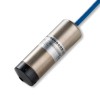 LMK458 Marine Approved Hydrostatic Level Transmitter - Marine approved level transmitter with 4-20mA output for measuring level of contents inside ship ballast, fuel, liquid cargo or wastewater tanks
LMK458 Marine Approved Hydrostatic Level Transmitter - Marine approved level transmitter with 4-20mA output for measuring level of contents inside ship ballast, fuel, liquid cargo or wastewater tanks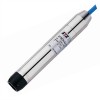 ATM/N Titanium Submersible Hydrostatic Pressure Transmitter - All Titanium submersible pressure transmitter for measuring the hydrostatic level of leachate, brackish water or sea water. Ranges from 1 up to 250mWC.
ATM/N Titanium Submersible Hydrostatic Pressure Transmitter - All Titanium submersible pressure transmitter for measuring the hydrostatic level of leachate, brackish water or sea water. Ranges from 1 up to 250mWC. LMK 806 Plastic 21mm diameter Submersible Level Probe - The chemical resistant LMK806 submersible level probe is designed for use in confined spaces with aggressive media.
LMK 806 Plastic 21mm diameter Submersible Level Probe - The chemical resistant LMK806 submersible level probe is designed for use in confined spaces with aggressive media. LMK 487 Submersible Ballast Tank and Draught Level Pressure Transmitter - A 22mm diameter titanium body seawater depth and level probe with a 4-20mA output with Lloyds and DNV-GL ship approval, for monitoring the quantity of ballast or the draft of a ship’s hull.
LMK 487 Submersible Ballast Tank and Draught Level Pressure Transmitter - A 22mm diameter titanium body seawater depth and level probe with a 4-20mA output with Lloyds and DNV-GL ship approval, for monitoring the quantity of ballast or the draft of a ship’s hull. LMK 858 Plastic Submersible Liquid Level Sensor with Removable Cable - Chemical resistant liquid level sensor with detachable signal cable for measuring quantity of aggressive media such acids and alkalis and sludge in tanks located outside of factory buildings.
LMK 858 Plastic Submersible Liquid Level Sensor with Removable Cable - Chemical resistant liquid level sensor with detachable signal cable for measuring quantity of aggressive media such acids and alkalis and sludge in tanks located outside of factory buildings.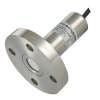 LMK457 Marine Approved Level Transmitter - Marine approved level transmitter with 4-20mA current loop output for shipbuilding with optional all CuNiFe construction for sea-water compatibility in ranges from 0.4 mH2O to 250mH2O gauge.
LMK457 Marine Approved Level Transmitter - Marine approved level transmitter with 4-20mA current loop output for shipbuilding with optional all CuNiFe construction for sea-water compatibility in ranges from 0.4 mH2O to 250mH2O gauge.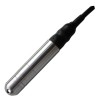 S12C SDI-12 Seawater Pressure & Temperature Transducer - SDI-12 protocol transducer for sensing water depth level and temperature in seawater, brackish water, tidal water, saline water or leachate.
S12C SDI-12 Seawater Pressure & Temperature Transducer - SDI-12 protocol transducer for sensing water depth level and temperature in seawater, brackish water, tidal water, saline water or leachate.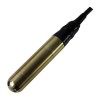 SWL Marine Bronze Submersible Level Sensor - Analogue output sensor for immersing in seawater to determine depth or change in water level by measuring hydrostatic pressure.
SWL Marine Bronze Submersible Level Sensor - Analogue output sensor for immersing in seawater to determine depth or change in water level by measuring hydrostatic pressure. IMCTL Submersible Liquid Level and Temperature Transmitter - IP68 combined liquid level and temperature, dual 4 to 20 milliamp output pressure sensor with a 316L or Marine Bronze housing.
IMCTL Submersible Liquid Level and Temperature Transmitter - IP68 combined liquid level and temperature, dual 4 to 20 milliamp output pressure sensor with a 316L or Marine Bronze housing.
- Abstraction pump protection using a screw-on hydrostatic level transmitter in a tidal river
- Desalination plant feed tank submersible level sensor
- Floating dry dock ballast tank 14ft range 4-20mA output submersible seawater level sensor
- Tidal level measurement with SDI-12 interface seawater level sensor
- Low power tide gauge sensor for remote seawater level monitoring
- Dock bridge tidal flap submersible level transmitter with sea water compatibility
- Underwater 50 metre sea depth 4-20mA output sensor
- Seawater intake channel submersible level sensor with 5m range and 4-20mA output
Find out more about Sea, Brackish or Salt Water Submersible IP68 Depth & Level Sensors to determine which product options and capabilities will best meet your application requirements.
These submersible sensors are specifically engineered for continuous depth and level measurement in challenging marine environments, including seawater, tidal zones, and brackish estuaries. Achieving reliable performance requires designs that address both the pressure of submersion and the highly corrosive nature of salt water.
An IP68 rating signifies protection against long-term immersion under specified pressures. However, for permanent saltwater installations, this rating must be supported by meticulous material selection and construction. Standard stainless steels often fall short due to chloride-induced pitting and crevice corrosion. Therefore, these specialized sensors frequently utilize materials like Titanium Grade 2 or specialized marine bronzes for the main body, offering superior resistance to saltwater corrosion over extended periods compared to commonly used materials like 316L stainless steel.
Sensor diaphragms, the critical interface with the measured media, also demand careful consideration. Ceramic diaphragms (often Aluminium Oxide, Al2O3) are a popular choice due to their exceptional chemical inertness, abrasion resistance (handling suspended sediments), and immunity to corrosion. Alternatively, sensors might employ specifically selected metallic diaphragms, potentially using Hastelloy C276 or Titanium, depending on the pressure range and required dynamic response for applications like wave height measurement.
The integrity of cable entries and seals is paramount for preventing water ingress, especially under constant hydrostatic pressure and the osmotic potential differences encountered in varying salinity environments like estuaries. High-grade sealing materials such as FKM or FFKM, combined with robust, specially designed cable gland assemblies, are essential for maintaining a watertight enclosure long-term. The submersible cable itself typically features jacketing made from materials like Polyurethane (PUR) or FEP, chosen for their resistance to hydrolysis, UV exposure, and potential abrasion in dynamic marine environments or installations involving channelled flow.
Accurate hydrostatic level measurement relies on stable sensor performance over time. Beyond corrosion, biofouling from marine organisms can impede sensor function or affect accuracy by obstructing the pressure port or coating the diaphragm. Some designs may incorporate anti-fouling features, specific material finishes, or detachable protective caps that discourage biological growth, crucial for reducing maintenance intervals in remote or difficult-to-access locations like offshore platforms or seabed installations.
Common applications extend beyond simple coastal monitoring. These sensors are vital components in tide gauging stations providing data for navigation, flood warnings, and coastal management. They are used for monitoring water levels in harbour locks, docks, and shipping channels, intake/outfall monitoring for desalination plants and power stations, managing water levels and salinity in aquaculture pens, tracking saline intrusion in coastal aquifers, and supporting research projects in marine biology, oceanography, and coastal erosion studies. The selection process involves matching the sensor’s pressure range (depth), material compatibility, accuracy requirements, and output signal (e.g., 4-20mA, SDI-12, Modbus) to the specific demands of long-term deployment in seawater or brackish conditions. Considerations such as integrated surge and lightning protection are also vital for installations prone to electrical storms, such as offshore structures or exposed coastal sites.
